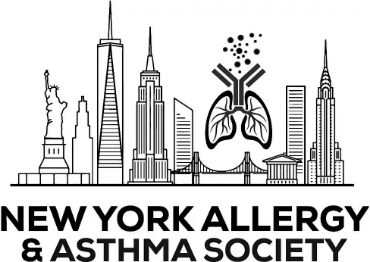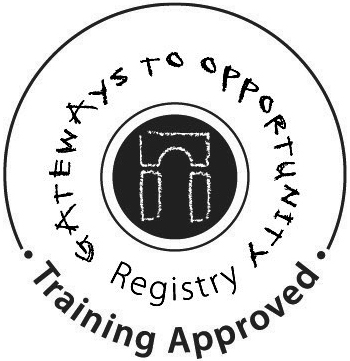Food Allergy 101
What are food allergies?
A food allergy is a medical condition in which exposure to a food – or allergen – triggers a harmful immune response. An individual’s immune system reacts to a food protein because it has mistaken that food protein as a threat. Symptoms can range from mild to life-threatening. Food allergies are life-threatening but are often dismissed because unlike other medical conditions, individuals seem otherwise very healthy.
Food Allergies vs Intolerances
Food allergy is sometimes confused with food intolerance. It is important to know that a food allergy is NOT the same thing as an intolerance. Food allergies involve the immune system and can be life-threatening. An intolerance is when your body has trouble digesting a particular food. The food can make you feel sick, often involving GI symptoms, but an intolerance is not life-threatening. The most common intolerance is to lactose, found in milk. Food Allergies can be life-threatening, intolerances are not.
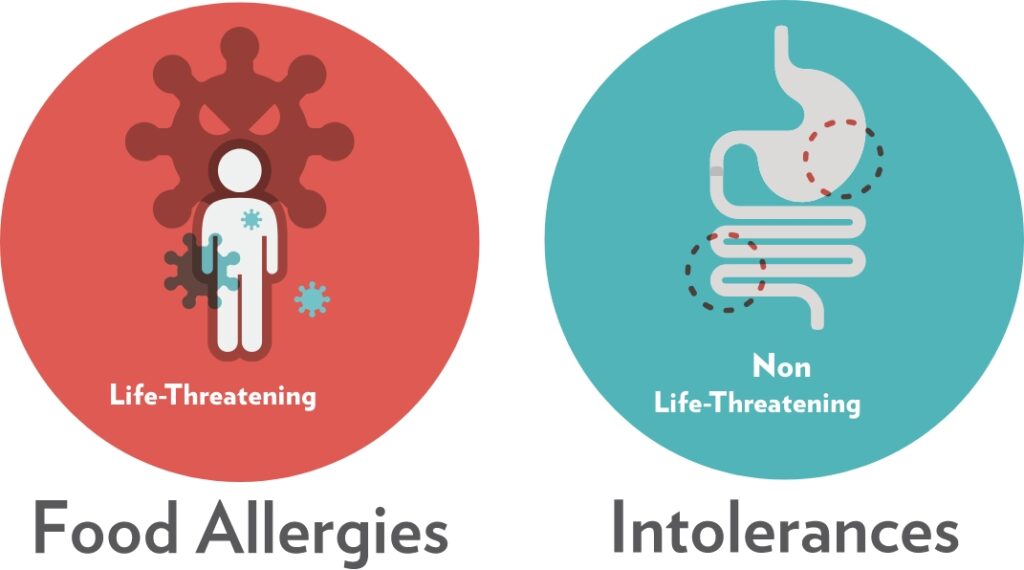
What are the most common allergens?
In the United States, the top 9 food allergens are: milk, eggs, peanuts, tree nuts, soy, wheat, fish, shellfish, and sesame. However, an individual can develop an allergy to any food. While other allergens may be rare, they must be taken just as seriously as an allergy to peanuts.


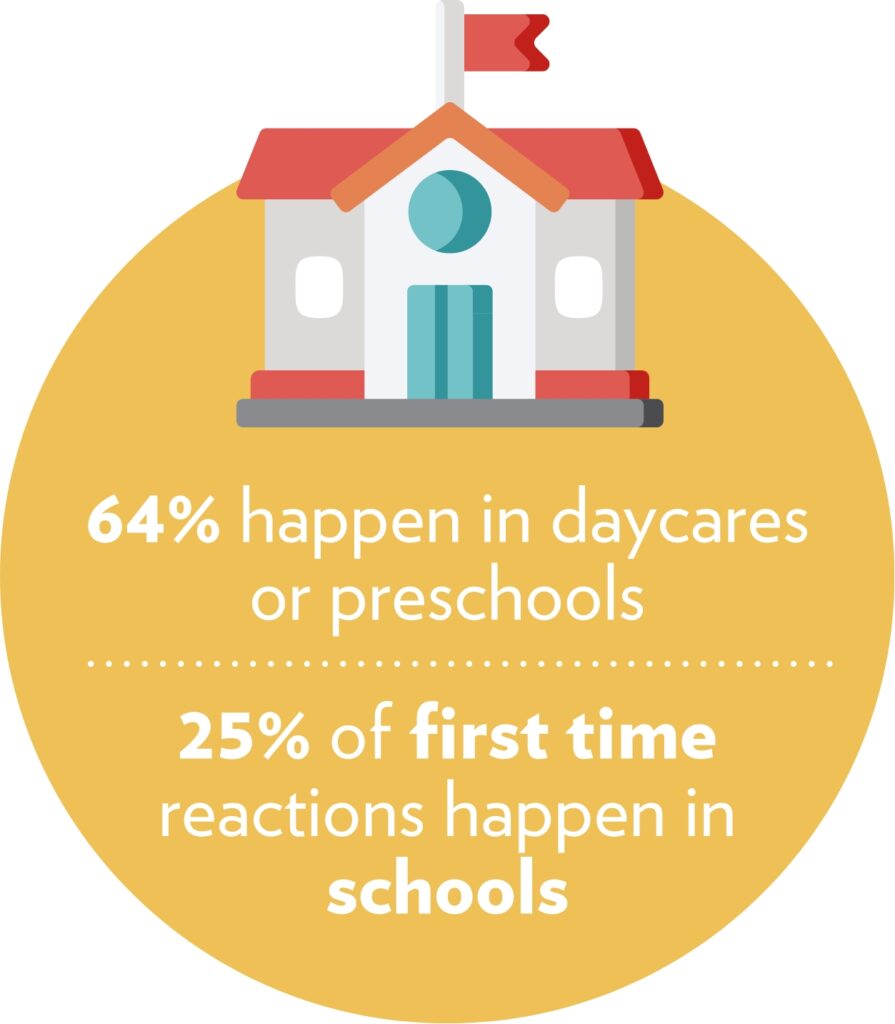
“It is common for food-allergic children to experience allergic reactions in schools and preschools. Every effort should be made to prevent, recognize, and appropriately treat food-allergic reactions in schools.”
Managing food allergies requires a partnership between families, health care providers, and schools.
What happens during an allergic reaction?
An allergic reaction to food can have many different symptoms, and a single person can experience different symptoms from one reaction to the next. Many reactions start with skin symptoms, like hives or a rash, but some do not. More serious symptoms like a drop in blood pressure and trouble breathing can be life-threatening.
Mild symptoms include:
-
Mouth: itchy mouth
-
Skin: hives, itchiness
-
Nose: itchy or runny nose, sneezing
-
Gut: mild nausea or discomfort
Severe symptoms include:
-
Lung: shortness of breath, wheezing, repetitive cough
-
Heart: pale, blue, faint, weak pulse, dizzy
-
Throat: tight, hoarse, trouble breathing/swallowing
-
Mouth: significant swelling of the tongue or lips
-
Skin: many hives over body, widespread redness
-
Gut: repetitive vomiting or severe diarrhea
-
Psychological: feeling something bad is about to happen, anxiety, confusion
Talk to your allergist and work with them to fill out a Food Allergy & Anaphylaxis Emergency Care Plan to be prepared in an emergency.
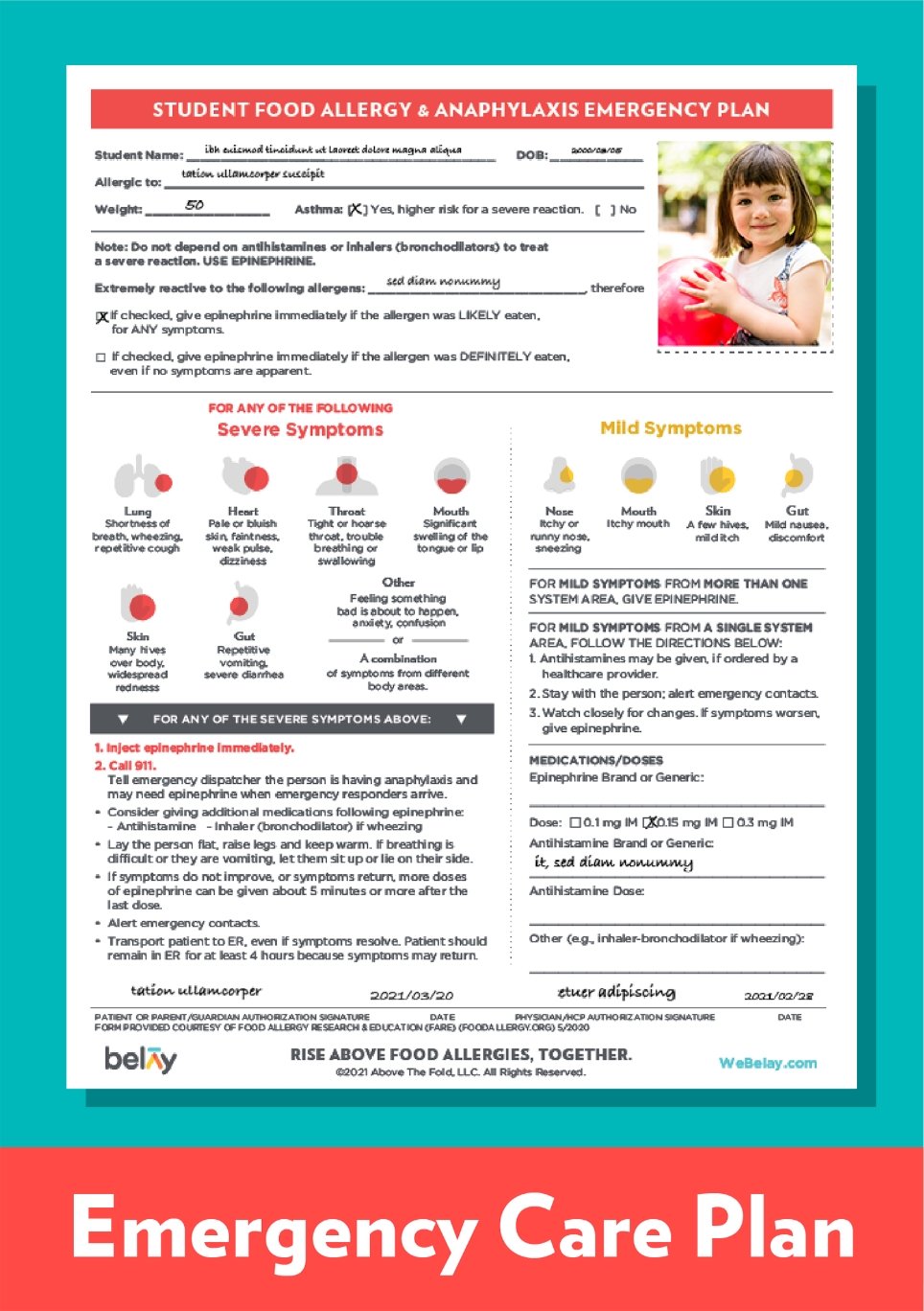
What is Anaphylaxis?
How do you treat anaphylaxis?
The only treatment for anaphylaxis is epinephrine.

Will antihistamines, like Benadryl, stop an allergic reaction?
How long does it take for a reaction to start after eating a food?
Symptoms usually start as soon as a few minutes after eating a food and as long as two hours after. In some cases, after the first symptoms go away, a second wave of symptoms comes back one to four hours later (or sometimes even longer). This second wave is called a biphasic reaction. The risk of a biphasic reaction is why patients who have a severe reaction should stay at a hospital for four to six hours for observation.
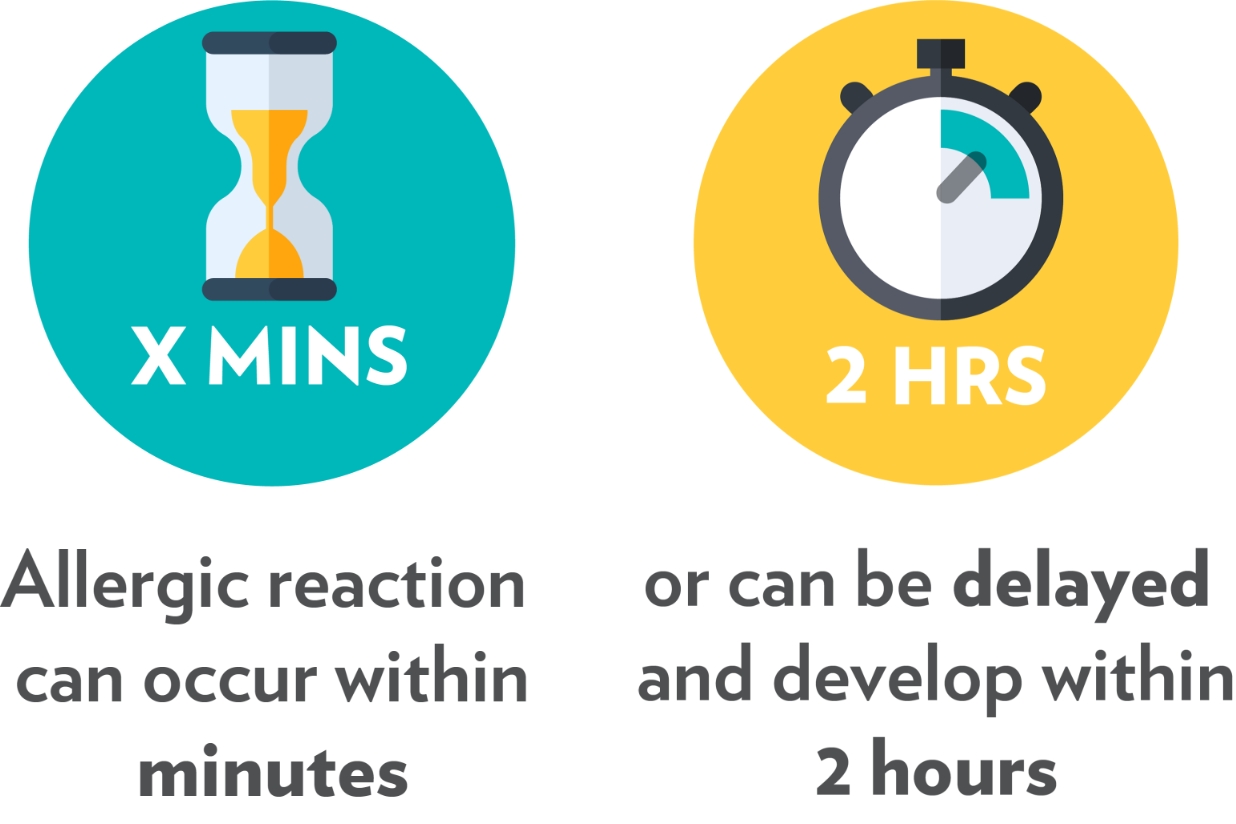
Can the severity of a person’s allergic reactions to food be predicted from his or her previous reactions?
No. Someone whose reactions have been mild in the past may suddenly experience severe reactions that could be deadly.
Why are food allergies increasing?
The Centers for Disease Control and Prevention have reported a 50 percent increase in the number of children with food allergies since the late 1990s. Many theories have been suggested as to why the number of people with food allergies is growing, but scientific research has not yet found the cause.
Is there a cure for food allergy?
Not yet. Strict avoidance of the food allergen is the only way to prevent a reaction and an epinephrine auto-injector is the only medicine to stop a severe reaction called anaphylaxis.
Can a person outgrow their food allergies?
Peanut, tree nut, fish and shellfish allergies usually are lifelong. Milk, egg, wheat and soy allergies usually begin in childhood and eventually may be outgrown.
If I think I or my child has outgrown an allergy to a food, is it okay to try a small amount of that food?
No. Only your allergist can test for this.
Understanding Food Labels
Read every food label, every time. It is best to always double and triple check the ingredients just to be on the safe side. Pre-packaged foods are required to list any of the top 9 allergens if they are in the ingredients. “Manufacturers have two options to indicate a major food allergen on product labels. The first option is to list the allergen in parentheses after the ingredient. The second option is to list the allergen at the end of the ingredient list. Often this “Contains” statement is bolded. See the box below for examples of these two options.”
Important to note, manufacturers are not required to say “contains” allergens can simply be included in the ingredients as seen in the first example.
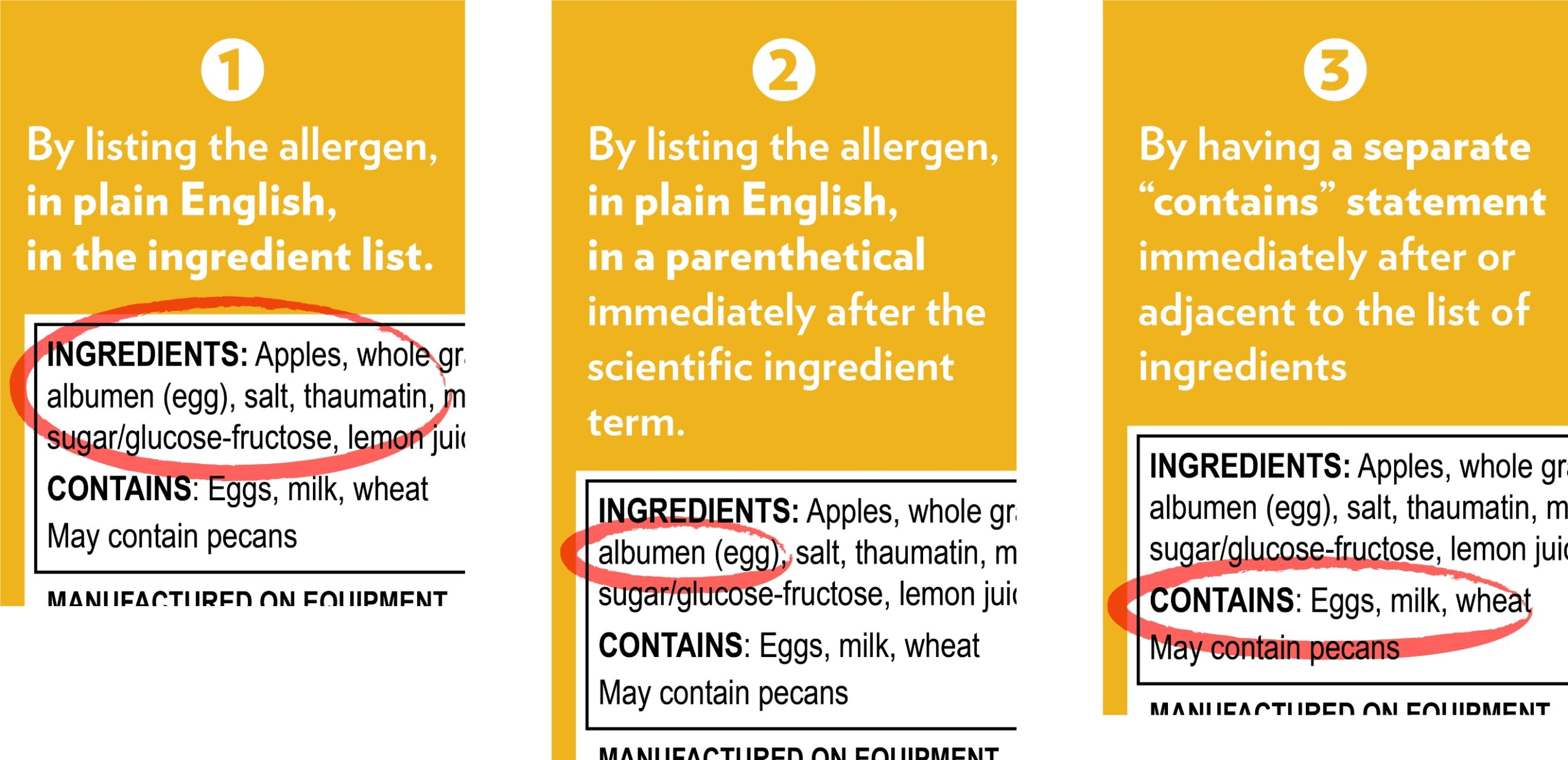
Precautionary Labeling
The other type of labeling you will find on many packaged food products is precautionary labeling. “Most allergists recommend avoiding these products. Studies have shown that some of the products actually do contain allergens in amounts significant enough to cause an allergic reaction.”
Food Allergies in Daycares, Preschools, and Schools
Managing food allergies requires a partnership between families, health care providers, and schools
25% of first food allergic reactions happen in schools
64% of allergic reactions that occur in school settings happen in daycares or preschools
“It is common for food-allergic children to experience allergic reactions in schools and preschools. Every effort should be made to prevent, recognize, and appropriately treat food-allergic reactions in schools.”
What Teachers Can Do
“The best strategy is to help students with allergies avoid the foods and drinks that they are allergic to. Be sure to read the ingredients on food labels and don’t allow food in your classroom if it might cause problems. Students with food allergies may be bullied because of their allergies. Help other students understand the special precautions required due to food allergies. Students at risk for food allergies must have a plan for handling emergencies. Make sure you, the students, parents, and school nurse all know where the epinephrine auto-injector is stored and how your student will get it quickly if needed.”


